Have you read Dickens' "A Christmas Carol," "Great Expectations," or "A Cricket on the Hearth"?
If so did mentions of debtor prisons and workhouses leave no impression?
Dickens wrote at the very end of the Plantation Era and yet, in stories set in the capital city of the world, London, children are constantly depicted as speculative labor commodities.
A great author like Dickens achieves currency by tapping into the framework of his time. In our time, we have Steven King, glorifying sissydom, guilt and passivity—the normal conditions of suburban life, of sloth as good and weakness as virtue. In Dickens' time, he depicted the monetization of the individual as an economic unit toiling as a gear in a pitiless machine.
Both authors are renowned as the best of their era. Yet the readers of King cannot possibly grasp the subtext of Dickens' every day drear as reality and frame it in their own experience of ease as an anomaly of those times, with all times, peoples, religions, economies and ages exactly the same according to our common view as "all men" are and have been "created equal." In other words, our birth within the lie of equality blinds us to the perpetual inequity of 10,000 years of civilization, unable to grasp a past reality as our framework is based on our current delusions that all systems of social control and business entities exist to safeguard and provide for us—a cruel deceit that the modern mind cannot imbibe, steeped as it is in the false fabric of the Lie.
Voltaire, Hawthorne, Melville and Dickens all framed the horrors of childhood and youth under Western Civilization in fiction, including the brutality of the step-mother in Moby Dick.
Biographies of such men as Richard F. Burton, who, like most "better off" British lads were consigned to a hellish stay away from home where they were beaten and abused in boarding schools, a reality that their parents, having been abused in these same institutions, understood, are redolent with institutional brutality towards the child. Some parents made the decision to retain the services of a nanny who was as cruel as possible. Burton and his brother, as toddlers, used to wage war on their nanny, shove her down in a rush, and then kick her with their little boots.
During this period children were being worked to death in mines and factories at a rate of 10,000 fatalities a year in England. By contrast, Burton and his brother did have it good, as they were only tormented rather than worked to death. In the previous period or the 1700s, Children were routinely referred to as half-freight, and their parents as freight, when they were trafficked into a miserable bondage. The very terms "girl" and "boy," meaning slave in plain Plantation Period English, came to mean all children and replaced "lass" and "lad." That diction drift traces the trajectory of children from late medieval Europe through the modern period, from child of a family, with the family being the basic agrarian economic labor unit, to slave of the corporation, the master and the state in an empathy-free world where the atomized individual was the labor unit. This labor unit was more easily interchangeable between tasks in a more rapidly growing and specializing economy. Thus the American worship of economy of scale as a whole, God-Granted good for all mankind, seems obviously to have been born in the plantation experience, which transferred lad to boy and lass to girl, a child of parents into a waif of the economy.
Records from late 19th and early 20th centuries Industrial America, by men such as London, Panzram, Black and Carlisle, in a time when boys and girls in orphanages were bought and sold as unpaid laborers and abducted for prostitution by police who worked as procurers for whore houses, demonstrate a clear retention of the child as a labor commodity.
At this point, I would like to consider horror and fantasy fiction out of Great Britain, which employs predominantly child protagonists in very dark and brutal settings. The experience of WWI is the most apparent thread connecting the writers of greatest empathy in speculative fiction: Eddison, Hemmingway, Junger, Peake, Tolkien, Lewis. The plight of the industrial child is the pervasive subtextual thread. Taking away the German and American authors here listed, Peake, Tolkien and Lewis, who crafted the darkest fantasies that held the longest interest among future readers, employed child protagonists. All of the four English authors here used WWI and its dehumanizing horror of scale as the model or the motivation for their heroic fantasies. Of these four WWI veterans, only Eddison, who wrote closest in time to the war, wrote from an adult perspective. The other authors seem to have tapped into the fact that Western Civilization is keyed upon the destruction of innocence and myth in favor of economy of scale and efficiency and also that Children were the key targets of industrial economics and suffered most cruelly and perished in larger numbers than adults. The entire idea was to kill off as many children as productively possible and prevent them from becoming adults, except as criminals or soldiers who would then be monetized by the machine.
C. S. Lewis' "Chronicles of Narnia" tell the tale from the innocent vantage of English children confronted with animal heroism and a predatory world order. In his non-fiction book "The Abolition of Man," Lewis demonstrates a keen understanding of the child's mind as the target for dehumanizing state propaganda. The honor of animals and the innocence of children are two means of reflecting the adult combat veteran's feeling of utter dislocation from the traditions of his forefathers and of projecting the need to reacquaint with those severed patrimonies through the fantasy of chronological-dimensional regression to a medieval setting, when honor still meant something and machines and scale as yet did not rule. Lewis created a field of traditional strife and romance where a battle between good and evil could be conducted in stark contrasts beyond the grey field of erasing lies that was industrial warfare. Eddison rendered this similarly from the adult perspective.
Peake, in "Titus Groan," "Gormenghast" and "Titus Alone" crafted a world of horrifically stilted adult cruelty through which a boy must navigate. The world of "Gormenghast," the most horrific and most Dickensian and woeful of these works, was crafted by the man who suffered the worst body and brain injuries of this group of authors in his service to the industrial war machine of WWI. He reaches back most stridently to Dickens and his message that the adult world preyed upon the child world with a ghastly lack of decency.
The greatest of these masters of fantasy, was J.R.R. Tolkien, who wrote "The Hobbit" and "The Lord of the Rings" from a child's perspective. The most horrific scenes are all from the vantage of the hobbits. Interestingly, only the hobbits themselves and their few friends use that name. All of the monsters and most of the humans sneer, "Halfling," echoing the designation of half-freight in the kidnapping trade that remained current in Tolkien’s lifetime, especially with Home children.
The most telling aspect in the Hobbit and The Lord of the Rings, is that children alone are immune to the lure of power and the lie. The Dark Lord binding kings of men in the dark is an obvious metaphor for the lie, something that children can see through, not vested as they are in the field of constant compromise that is adulthood. The character of Gollum, who, ages before, was a hobbit until he found the ring and came under its spell, is a monstrous and fatefully redemptive character. Just as the Dark Lord and his armies are a metaphor for the industrial machine and the lies of false humanity that binds its slaves to it, Gollum is the metaphor for childhood's end, the corruption of humanity by economics and industry, the corruption of Man, not by his quest for power, but by his desire to maintain his material comforts and remain in a materially childish state but bereft of its innocence. External to this corruption of comfort and security of the vestigial child, is man's corruption by his desire to impose his will on the world.
English literature, unlike ancient and medieval literature, is replete with the child's perspective of the godlike adult world, just as the ancient hero's mortal perspective put him at the mercy of the gods.
Straight adventure authors such as Robert Louis Stevenson in "Treasure Island," and "Kidnapped," as well as Mark Twain in "The Adventures of Huckleberry Finn," dealt with the child's perspective during the same period as Dickens, in which the boy was estranged from family and ruled directly by the mechanistics of economic society.
It is my general suspicion that the vulnerability of current readers as adults rendered into truant children by a society of media control and kept in helpless comfort gives the author like Steven King the ability to terrorize such readers in shallow wise. Likewise, just as the Victorian readers of Dickens and Stevenson all knew that a child's life was hell; and later their grandsons burned like so much coal in the inferno of The Great War, sensed that they were the abused children of an order of expansively evil magnitude, sought likewise to write from the view of the child—for the hero was becoming impossible to sustain and heroics had to be internalized.
Industrialization cursed the child to a hell of brutal servitude in the 18th and 19th centuries, and then cursed the first generation of young men of the 20th century to the fate of the ork, mere hamburger for a war machine.
The half-freight, in Tolkien’s hands had become the Halfling, still a child inside with all the perils of adulthood before him. Tolkien was a philologist, a doctor of language, and well knew the meaning of Halfling as a reflection of the cast-off orphans of a mercantile world.
Did the term Halfling descend from "half-freight" and "foundling," the latter being an orphan?
Those terms are surely linked in his work, as those surrogate moral children, the hobbits, are arrayed against a grey power of industrial scale [the war magic of Mordor and Isengard] and the actual orphans who crowded the streets of London and were swept into oblivion by human traffickers from 1600 through 1914, had been driven to that state by over 200 acts of enclosure, by which poor rural families lost access to common lands and were driven to the cities by the bullies of the land owners who appropriated these places as private estates. This reader is convinced that Tolkien and Peake and Lewis knew of what they wrote, just as Stevenson and Dickens before them.


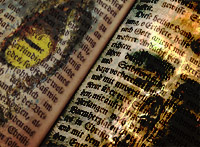
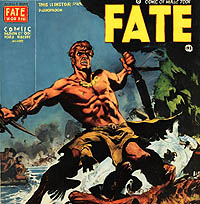
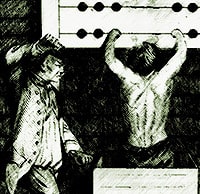


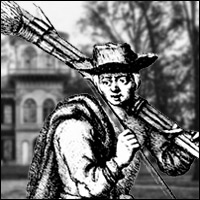
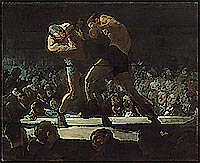
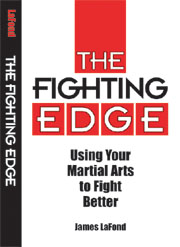

A very lucid introduction to Plantation America. Hope this is destined for a book.
One cant imagine things were any better in Euope, which makes the early enthusiastism for WW1 by the young men of the lower classes on all sides inexplicable.